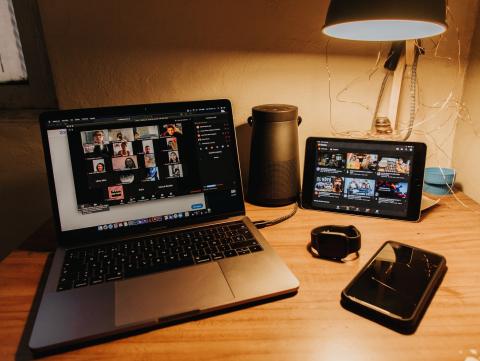
Working with a partner in a different time zone than yours is not impossible: this can work, but only if the clear bases of work, schedules, and availability are established from the beginning. However, we have seen how many companies do not establish these limits, experiencing complicated situations with their partners and affecting their projects.
Many situations can arise when working with a partner in a different time zone, we list some of them and what to do:
Situations that can occur when working with a partner in another time zone
Productivity vs availability
One of the situations that can occur when working with a technology partner in another time zone is the decrease in team productivity, delaying the development of the project, due to an irregular availability of the partner.
It may happen, for example, that a North American company hires a partner from Asia, with a time difference of more than 10 hours. If a problem arises with the project in the afternoon at the client's location (America), on the partner's continent (Asia) it would already be late at night, making immediate resolution of the issue impossible.
If the partner does not have his responsibility very delimited either, it may happen that the client writes to him in his local working hours and the partner in another time zone responds "I am not in my working hours". It must be clear what the working hours of the company that is hiring the partner are so that it adjusts to it as much as possible and is available when required in that time range.
It's harder to stay in sync
This is one of the situations that hinder the synchronization of the tasks of the in-house team with the partner in a different time zone. If the partner is not aligned with the client's schedule and is also unaware of the project's priorities, tasks will be out of date and the overall scope of the project will suffer.
We know from our own experience that it is quite a challenge to adjust to a different time zone, but the key is to maintain communication. Having daily or weekly calls is an excellent initiative to know what each member of the team is working on, what is the goal of each one for the week and what results are expected to be achieved.

That there are several communication channels in the team - video calls, conventional calls, chats, Intranet - is essential so that all employees are on the same page and feel confident about the tasks they are doing, their scope and how that affects the rest of the team.
One of the confusions that get in the way of timing is related to deadlines. An engineer may have to deliver project progress at 5:00 pm Panama time, but he is located in China, 13 hours apart. To avoid this, deadlines have to be very clear regarding the time zone of the company and the partner.
Meetings very late or very early
If the 8:00 AM meetings are challenging for some, imagine having to set up meetings with two teams from two drastically different time zones. If you schedule a video call at 10:00 in the morning America time, for example, for your partner in Asia it will already be very late at night and he is probably sleeping. On the other hand, if you schedule it at 6:00 in the morning, it will be too early for your home team.
With this type of thing you would have to deal with when working with a partner located in a continent far from yours, a relationship that can bring many long-term business benefits, but that requires a sacrifice quota and high organization regarding schedules.
The main thing in this case is that, before setting up a team meeting, ask the availability of each of the employees so as not to create annoyance and, at the same time, that they feel heard and taken into account. To the extent that the offshore or nearshore team feels respected in terms of their working hours, the greater will be their satisfaction and commitment in their working hours.

Trouble socializing
In an office, obviously getting work done will always be the main goal, but socializing among colleagues is necessary to form bonds in the team and a good atmosphere of collaboration between everyone. Sure, this can be a bit more complicated if the company is in America and the partner is in Vietnam, thousands of thousands of miles away.
One way for everyone to stay up-to-date and connected with each other is through business chat tools such as RocketChat or Slack, where the team can not only give reports or ask about tasks in progress, but also create channels to talk about day-to-day life. , congratulate colleagues for their achievements or joke about something from everyday life. Everything contributes to forming bonds between all so that, despite the distance, they feel within a single team.
We recommend you on video:

